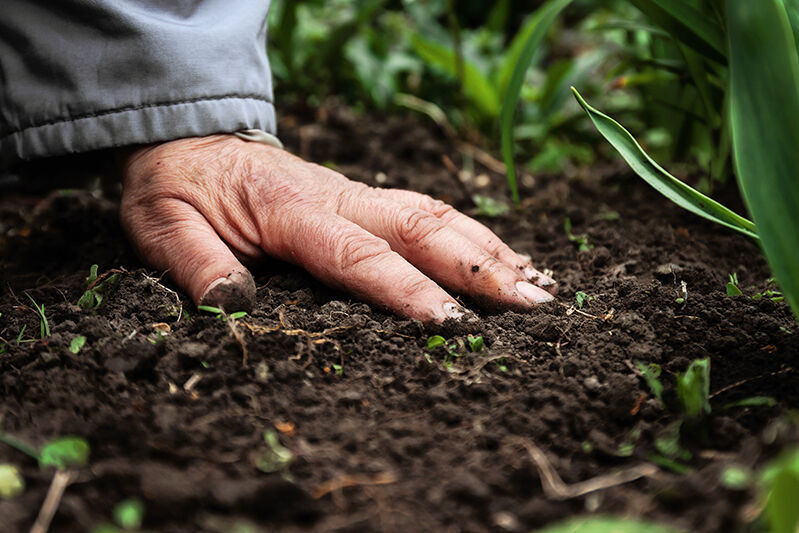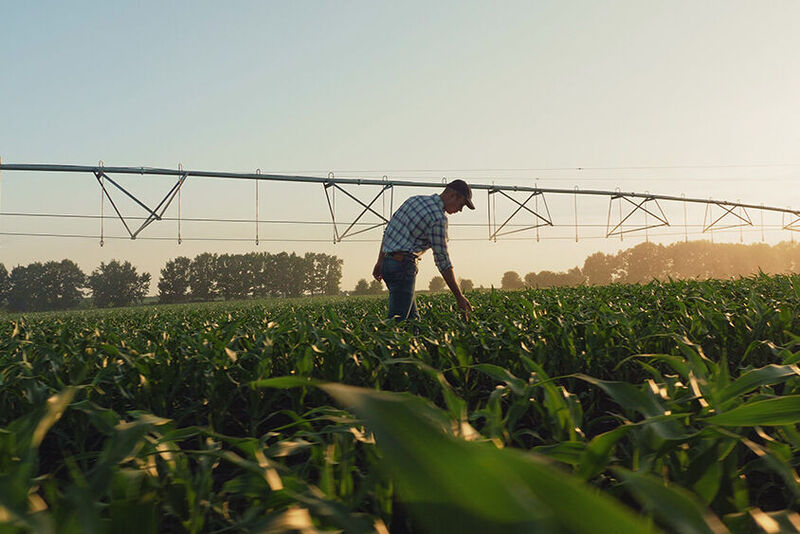
As we celebrate World Soil Day 2023, the resonance of this year's theme, 'Soil and Water,' echoes the profound interdependence of these two vital elements in sustaining life on Earth. Both soil and water stand as indispensable foundations for food production, thriving ecosystems, and the overall well-being of humanity. Recognizing their invaluable roles, we must take proactive measures to safeguard these precious resources for the benefit of future generations.
Soil and water constitute the medium in which plants grow and derive essential nutrients. The role of soil extends beyond being a mere substrate; it regulates water regimes, carbon emissions, and ensures the nutrient uptake of plants, thereby enhancing plant health and, ultimately, feeding us. Notably, rainfed agriculture systems, accounting for 80 percent of croplands, contribute significantly to global food production, relying on effective soil moisture management practices. On the other hand, irrigated agriculture systems withdraw 70% of the world's freshwater and cover 20% of croplands (FAO, 2023).

The soil's health and water quality and availability are intricately connected. Fertile soils, enriched with organic matter, are pivotal in regulating water retention and availability. By incorporating organic matter into the soil, we nourish beneficial fungi and bacteria, creating a vibrant soil food web that is fundamental for human sustenance. Overuse of artificial fertilizers disrupts soil quality and adversely affects the nutritional content of plants. Choosing organic matter over synthetic fertilizers strengthens plants, contributing to human health and ensuring food security – a need more pressing than ever.
Our holistic solutions for soil health
In our relentless pursuit of fostering healthy soils, we take a multi-faceted approach, offering a wide variety of bio-stimulant technologies that directly enhance soil biodiversity. By introducing beneficial micro-organisms to the soil environment, our solutions increase root biomass in crops, fortifying the carbon content of soils and ultimately contributing to a more robust soil structure.
Our biostimulants, along with several of our Plant Protection Product solutions, play a pivotal role in improving soil aeration and drainage, enhancing water retention, and overall restructuring the soil. This not only boosts nutrient use efficiency but also leads to a reduction in nutrient loss, a critical aspect of sustainable soil management.
Crucially, our plant biostimulants go beyond conventional functions; they increase crop tolerance to abiotic stresses such as drought, heat, and cold. This resilience contributes to the overall adaptability of crops to challenging environmental conditions. Additionally, the use of our beneficial insects reduces the dependency on a wide array of conventional fertilizers and other soil-disrupting products, thereby minimizing soil contamination.
EU's Soil Strategy 2030
The global perspective on soil varies among governments, businesses, communities, and individuals. While some regions consciously protect soil through sustainable agricultural practices, others continue to deplete soil resources faster than they can be replenished. The recently introduced EU Soil Strategy for 2030 and the proposed Soil Monitoring Law are pivotal in addressing soil degradation and promoting sustainable land management. The proposed directive emphasizes the importance of monitoring and managing soil health to combat threats such as erosion, contamination, and biodiversity loss.
The Soil Monitoring Law aims to establish sustainable soil management as the norm, urging Member States to define practices that prevent soil degradation. It targets key soil threats, aligning with Koppert's mission to enhance soil health and resilience. By identifying and addressing potentially contaminated sites, the law contributes to the EU's goal of achieving a toxic-free environment by 2050, aligning with Koppert's commitment to environmentally friendly agricultural practices.
However, more data is needed to showcase their effectiveness for sustainable practices to gain global traction. A shift in mindset and an effective global governance approach are essential to support the widespread adoption of sustainable land use and soil management practices.
The future of agricultural soil does not solely rest in the hands of governments or growers. Education plays a pivotal role in shaping our future. We already possess the knowledge needed to protect the soil, and public awareness about sustainable solutions, alongside conventional practices, offers hope for a positive change in agricultural practices. Through this collective effort, we can keep the soil alive and safeguard its biodiversity for the prosperity of many generations to come.